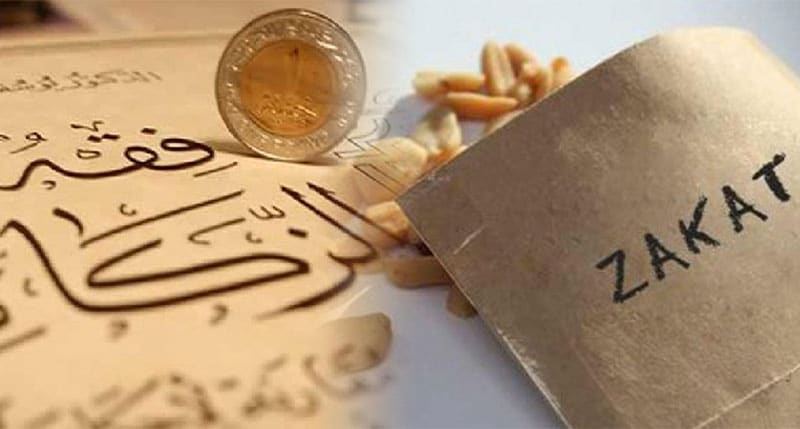Introduction
Zakat is one of the pillars of the Islamic faith. It means you donate some of your personal wealth to those in need. Zakat purifies your spirit and brings you closer to Allah, or God. Learn how to calculate your personal zakat so you can fulfill your spiritual duties.
Determining the Nisab
- Calculate the nisab. Nisab is the threshold or cut-off amount. If your personal wealth, or what you own, is more than the nisab, you owe zakat. If your personal wealth is below the nisab, you don’t owe zakat. You use either the current market price of gold or silver to calculate nisab. Always check current market rates, as gold and silver prices fluctuate.
- Choose either the gold or silver rate, not both. The nisab is the cash equivalent of 3 ounces/87.48 grams of gold or 21 ounces/612.36 grams of silver.
- For example, if each ounce of silver is currently worth $15, the nisab using the silver calculation is $315 ($15 X 21 ounces = $315). If your personal wealth is above $315, you owe zakat.
2. Determine your cycle dates. Zakat is an annual duty. It’s due one lunar year, or hijiri, from the first day you exceeded the nisab threshold or from the day you last paid zakat. For western, Gregorian and Hijri Date conversations, check out: IslamicFinder Hijri and Gregorian Calendar Date Conversions
- If you know your personal wealth is always above zakat, select any date during the year to pay. Keep track of the date so you remember when it’s due the next year.
- Many people choose Ramadan as the month they pay zakat. Ramadan is one of the five pillars of Islam. It’s a sacred time when Muslims read the Koran and fast from dawn to dusk. Paying zakat is another way to cleanse the soul during this holy period
3. Base your calculations on silver. Silver has a lower price than gold. Using silver for the nisab means you’re more likely to exceed the threshold. You’ll be able to meet your spiritual and moral duty to provide for those who are less fortunate.
- For example, if each gram of silver is worth $0.66, the nisab using the silver calculation is $404.15 (612.35 grams X $0.66 = $404.15). More people would exceed this threshold rather than the gold threshold.
4. Know the difference between zakat and tax. Zakat is not a tax. It’s a spiritual act to help relieve people’s suffering. Some people believe that in many countries, paying zakat is voluntary whereas paying taxes is mandatory. However, this is incorrect. Zakat is one of the 5 pillars of Islam, and therefore, it is an absolute must on every Muslim who is able to pay it. It is attributed to the universal religion of Islam and therefore has nothing to do with the law of the land. Zakat directly helps the poor and needy.
- Zakat teaches you self-discipline. It helps you focus on helping others rather than on your own possessions and needs. It helps you be a better Muslim and brings you closer to Allah.
Determining Your Wealth
- Identify your assets. Start calculating your assets, or what you own. This is the first step is figuring out how much zakat you’ll pay. You exclude the assets you use for everyday life. For example, your primary residence, car, clothes, and business equipment are not used in your zakat asset calculations. It’s based on what’s left after you take care of you and your family’s living expenses.
- Some examples of zakat-eligible assets include stocks, savings, investment properties, cash, business income, or precious metals such as gold.
- Determine how much your zakat-eligible assets are worth for the year.
2. Identify your liabilities. Debt from credit cards, college or other loans subtracts from your personal net worth. These outstanding debts are deducted from your total zakat-eligible assets.
- If you obtained a personal loan of any type (car, home, cash), then look at how much you pay per month to your creditors, not the entire outstanding debt.
- Add up how much you owe each month to your creditors. Multiply this amount by 12 to calculate your annual liability amount.
3. Determine your zakat net worth. Subtract your liabilities from your zakat-eligible assets. For example, your assets for the year total $6,000 and your liabilities total $2,000. Your zakat net worth or zakat pool of money is $4,000 ($6,000 – $2,000 = $4,000).
Calculating Your Zakat
- Compare the nisab with your zakat net worth or pool. If your zakat net worth is more than the nisab, you owe zakat. If it’s less, you don’t owe this year.
- For example, your zakat net worth is $4,000. Each ounce of silver is currently worth $15, so the nisab using the silver calculation is $315 ($15 X 21 ounces = $315). You have more than the nisab so you owe zakat.
2. Give a percentage of your zakat net worth. If you’re over the nisab threshold, give a minimum of 2.5% of your zakat net worth. Give more than 2.5% if you’re financially able.
- For example, if your net worth is $4,000, you’ll give $100 for zakat ($4,000 X .025 = $100). However, give more if you’re financially able.
- The calculation is slightly higher if you’re using a western, Gregorian calendar vs. the lunar Hijri calendar. If you’re following the western calendar cycle use 2.557% of your net worth. If you’re following the Hijri calendar, use 2.5% of your net worth.



